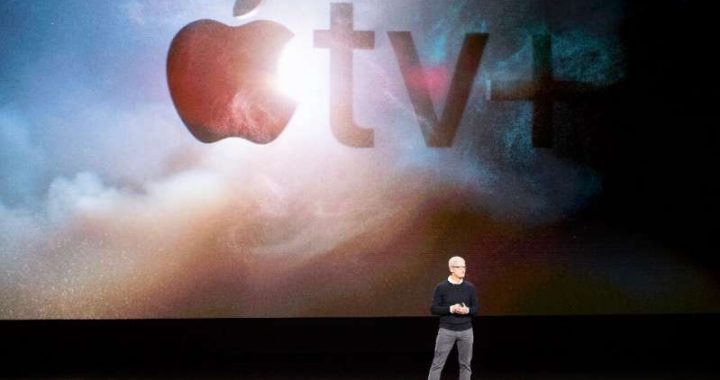Traditional banks are struggling to stave off the fintech revolution


Traditional banks are haunted by financial technology—fintech—firms. Challengers such as mobile-first banks Chime in the US, Monzo in the UK and Germany’s N26 have been around for a number of years now, but big global and regional banks are still struggling to deal with the competition. While fintechs experience a goldrush of investment—US$111 billion in 2018, up from US$51 billion in 2017—banking CEOs find themselves under increasing pressure from shareholders alarmed at the slow rate of change taking place.
In our conversations with senior managers of banks, we spot several blind spots which are often found among incumbents who get hit the hardest by disruption. Two stand out in particular: an over-reliance on existing competitive advantages and an inherent misunderstanding of what disruption really means for them.
Eroding advantages
Traditional banks have a few advantages that they believe will protect them from the fintech threat: branch coverage, the trust they enjoy from customers and government regulation. But these advantages are eroding rapidly.
According to international consultancy firm McKinsey, in the past decade, the top 25 US banks managed to grow deposits while reducing their branch footprint by 15%. Clearly, having a physical branch in every neighborhood is no longer necessary to drive customer deposits, as well as engagement.
Following the global financial crisis and bank bailouts, trust in the banking system was irrevocably shaken. Arguably, tech companies such as Amazon, Google, and Apple enjoy more trust from the global consumer than banks. With billions of devices and services from these companies already holding banking data and payment access in the form of apps and mobile wallet cards, customers seem to have already moved their financial transactions.

Regulation used to make it very difficult to set up and run a bank. But the new European Payment Services Directive (PSD2) could soon bring down this barrier to entry. PSD2 is a set of policies that gives significant choice and protection to customers on how they want to fulfill their banking needs, as well as allowing them to put all their banking data in one place.
Meanwhile, regulation technology (“regtech”) tools are also maturing. These are making core compliance, risk management and transaction monitoring processes easier for new entrants. So it is only a matter of time before the regulation barrier protecting banks falls away completely across the globe.
Misunderstanding disruption
The other blind spot for legacy banks is their tendency to have a narrow and misguided understanding of disruptive business models. This usually begins with treating a new species of competitors as traditional ones. For example Cathy Bessant, Bank of America’s CTO, commented on Apple’s announcement of a new credit card: “My reaction when I saw the announcement was, first competitively, all of the features that are in that card are offerings we have today.”
The propensity to see only the product or service and not the entire business model is common among incumbents across a range of industries. Kodak, Blockbuster and Nokia were only three of the hundreds of disrupted incumbents which were able to see only the product (and associated features) that threatened them and not how the business models of their competitors allowed the creation of entirely new ecosystems that they were poorly equipped to survive in. By stooping down to competing on a feature by feature basis, incumbents lose the chance to redefine an industry that they once dominated.
It is therefore not a surprise to us when we see banks closing down branches one by one, as a means of lowering costs, without attempting to find a position of power in their newly evolving ecosystem. This indicates a flawed understanding of the threat along the lines of: fintechs are winning because they offer similar services at a lower cost with better, digital-only customer experiences. Nothing could be further from the truth.

If there is anything to be learned from disruptions in other industries, it is that disruption is not a simple substitution at a lower cost. When customers adopted digital cameras they did so not because the quality of image and cost were now comparable to film, but because digitized images could be shared electronically. What photographs meant to people, who took them, when and of what, all changed in one fell swoop.
Fintechs are similarly changing what banking means to people, how they engage with it and what their expectations will be from their financial providers in the future. What killed Kodak in the end was not that they could not keep up with the technology, but their inability to appreciate the wider cultural and behavioral shift that ensued.
In the case of banks, the most important aspect of the shift is the move from product-focused to platform-based competition. Bankers feel good after making a profitable sale, or clinching a deal. Platforms are not about making profit from individual sales but how an expanding user base creates value for the entire network—a concept foreign to most banks. For platforms like Amazon or Facebook, customers are not just people who pay for products or services, they are the company’s most valuable asset—the reason why Facebook paid US$19 billion for WhatsApp.
It would be a mistake for banks to view the Apple Card as yet another card. The card, aimed at Apple’s 1.4 billion active devices and varied customer base, is just the tip of the iceberg. Facebook’s Libra, which has 2.4 billion users at its disposal, is not just a far-fetched dream which will take years to be accepted. It will bite incumbents sooner than they realize.
The quicker banks come to realize that they have a limited understanding of the fintech challenge, the more likely they will counter it successfully. Rather than trying to survive by closing down branches, launching mobile apps and hanging on to the promise of regulatory barriers, they should try to learn from the mistakes Kodak, Blockbuster, Nokia and others made.











